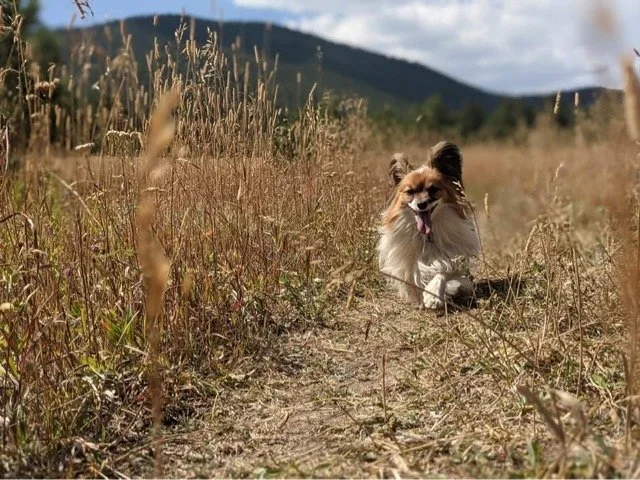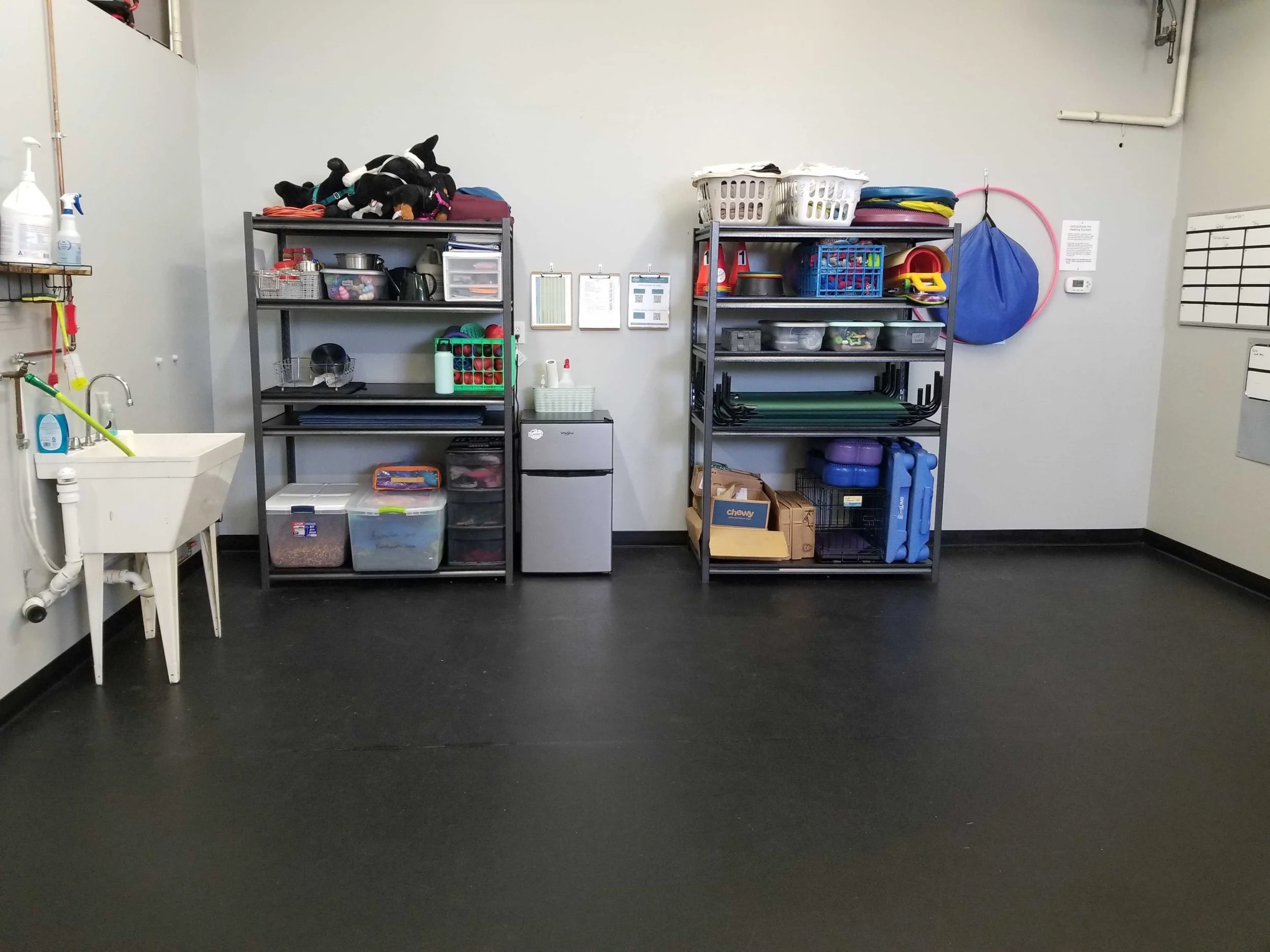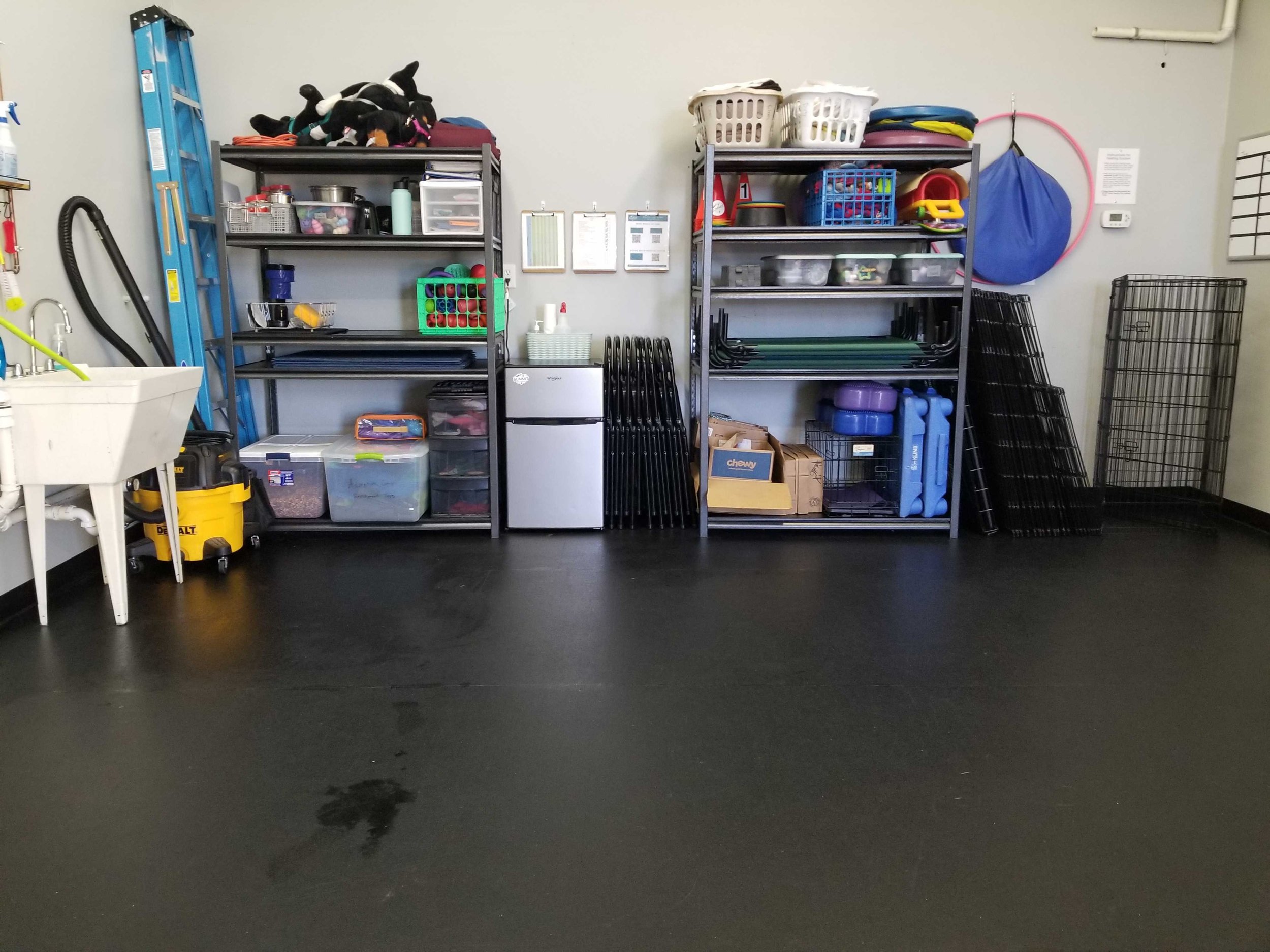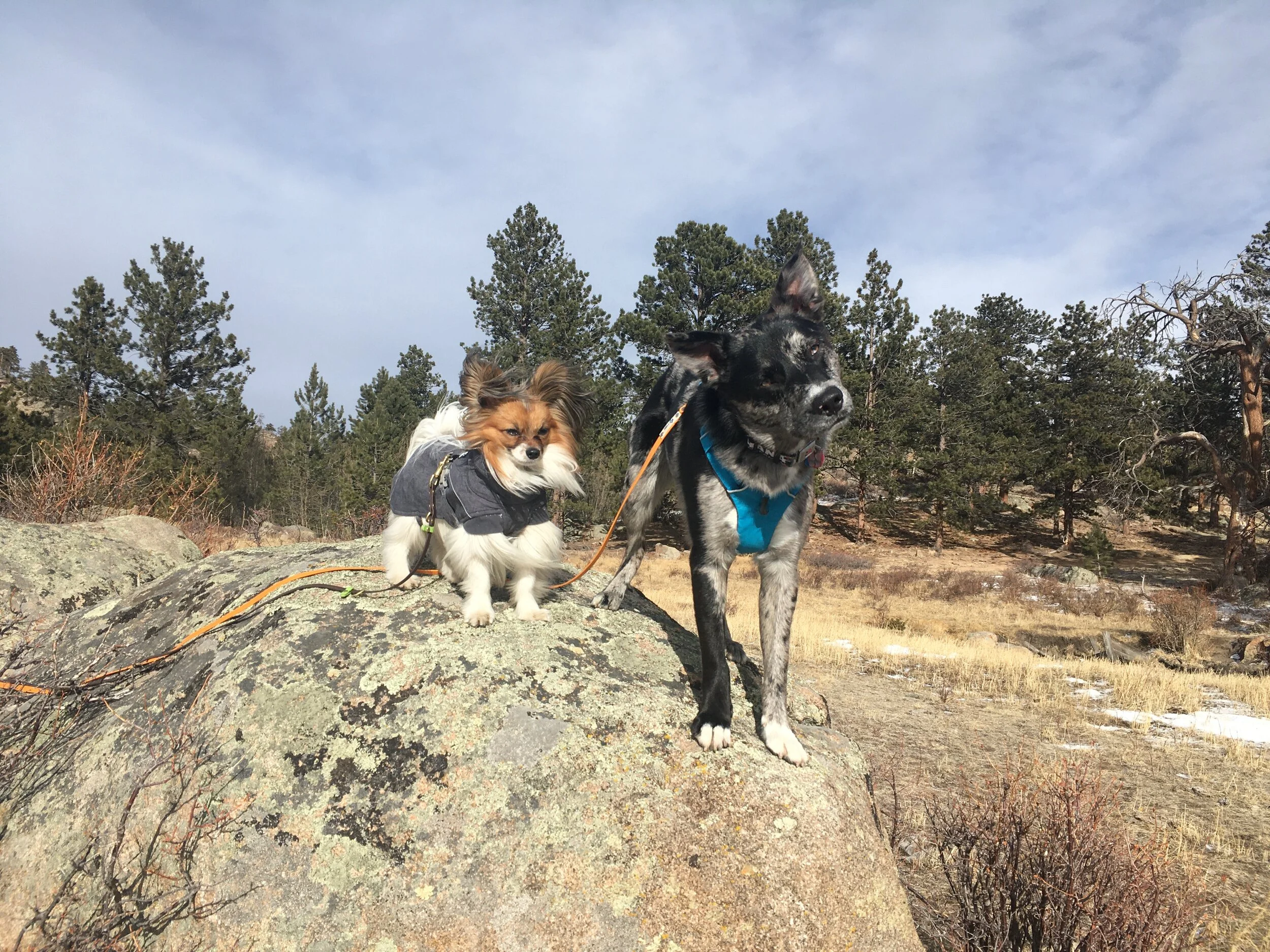By Meredith Decker
Summit Adventure Camp is a day training program specifically designed for puppies between the ages 9 weeks and 16 weeks. We curate our curriculum around foundational skills that will follow your puppy through their life and take advantage of the critical socialization period that they are in during their Camp experience. Camp is a great place to begin your puppy’s training and for you to get a break from the hard job that is puppy raising.
Primary Goals
Socialization
Socializing your pup is all about exposing them to new situations or environments and creating positive associations in these interactions. The key to socialization is helping your puppy feel comfortable and offering support when they need it. There are lots of things in our human world that might be scary to your puppy and we want them to feel safe enough to confidently say “yes, I’d love to check that out!” or calmly say “no thank you, I’m not feeling up for it today”. At Adventure Camp, we make sure that the new things we expose the puppies to are age appropriate and that if the puppies feel unsure we can support them to learning that new things are normal and usually fun. Your puppy gets an outdoor adventure (weather permitting) and we like to take this opportunity to help them become comfortable with new noises or smells. If the puppy wants to move closer to a stimulus, we will join them, but if they decide that the new thing is too scary, we help them work through those feelings and show them that it’s okay to move away from things as well.
One of the biggest pieces of socialization is to have your puppy meet new dogs. At Adventure Camp, your puppy gets ample opportunity to interact with the other puppies in a way that is safe for everyone and also helps teach them polite social skills. Puppies need help learning how to politely greet other dogs and regulate their play. If puppies had their choice, many of them would never stop playing. However, taking breaks from play is imperative to your puppy learning how to play appropriately. We want them to learn how to listen to their bodies when they feel done playing and how to respond appropriately. It’s also incredibly important that they learn to respect when another dog tells them that they are done playing.
Foundation Behaviors
In Adventure Camp, we focus on establishing foundations with your puppy from which you can build many different behaviors. All training sessions follow a curriculum that clients will have access to as their puppy progresses through Camp.
The first thing we want to do is establish a form of communication and teach the puppy the sound of a clicker or verbal marker (“yes or “good”). Marker Conditioning is the basis for positive reinforcement training. We familiarize the puppy with the sound of the marker so they learn that the sound of the mark means that they’ve just done something correct. It is our main form of communication with puppies when we are teaching them a new skill.
We also like to take time to help your puppy become comfortable with any kind of gear that they will wear regularly. We need leashes, collars and harnesses, so we help teach puppies how to be comfortable with the gear itself and the physical handling that will go into putting their gear on.
Potty training is probably the first skill you ever begin working on with your puppy. We continue all of that hard work at Camp with frequent potty breaks and plenty of management to make sure we minimize accidents.
The training work that we begin at Camp isn’t all active. One of the most important skills we work on is helping your puppy learn how to rest while other things may be happening around them. Each puppy has a pen with activities like puzzle toys, frozen kongs, or chews that they can occupy themselves with. It’s important that puppies learn how to appropriately entertain themselves rather than always looking to humans for entertainment.
Once we’ve established all of these behaviors, we move into building skills like coming when called or loose leash walking. We are also always happy to discuss with you any other skills that you may need help with and want to work on while your puppy is at Camp.
Adventure Camp Details
Adventure Camp is run on Wednesday and Friday mornings throughout the year. Drop off begins at 7:30 am and you can pick up between 11:30-12:00. We host a total of 4 puppies at a time so that each puppy gets individualized attention from our two Camp instructors and plenty of opportunities to work on their skills.
Adventure Camp is a package service, so when you sign up for camp, not only are you enrolled in 4 weeks of camp, you also get two 45 minute private sessions with the lead Camp instructor. In these sessions you learn how to apply the skills that your puppy is learning and you can ask any questions about puppy raising. You also get a treat pouch and a lifetime enrollment into our online Puppy Basics course. The Adventure Camp curriculum is based on this course so you can reference it throughout your puppy’s time at Camp. This is an excellent resource which we frequently reference in our daily report cards.
Because Adventure Camp is a day training program while you are not directly with your puppy, we offer plenty of opportunities for you to receive support while you work on transferring these skills to your home. In addition to the private sessions, we offer opportunities to connect with our trainers at our Parent-Trainer Conferences for 30 minutes every other Friday following Camp pick up. We also write up daily report cards which summarize what your puppy worked on each day at Camp and make sure to take at least one video every day of your puppy working on skills.
Daily Schedule
When your puppy arrives at Camp, we like to give them a few minutes to settle into the space by bringing them into their pen as each puppy enters the room. Once all of the puppies have arrived, we start the day with a little bit of play so they can get their wiggles out. Following the play session, each puppy will get their first individual training session. This is one opportunity that we take for the other three puppies to learn how to rest or occupy themselves while the fourth puppy is training. Each puppy also gets one outdoor walking adventure to help them grow in their confidence and begin working on loose leash walking.
Well-rested puppies make for the best learners, so once each puppy has gotten their first training session and walk we put them down for a nap. After nap time, the puppies will get their second training session and some more play time.
At the end of the day, you will be taking home a happy and tired puppy who has learned lots and is ready for a nice afternoon nap!.
Preparing for Puppy’s First Day of Camp
Once you have signed up for Adventure Camp, you will receive an email which has a link to some forms that you will need to fill out before your puppy’s first day and a place to submit your puppy’s most most recent vaccine records.
On your puppy’s first day of Camp, we offer you the opportunity to come into the training room to meet our Camp trainers and see the space where your puppy will be spending time. If you are interested in this opportunity, we suggest you arrive right at 7:30 to make sure we can get you in before all of the Camp puppy crew arrive.
Frequently Asked Questions
How is this different from Dog Day Care?
Adventure Camp is specifically designed with young puppies in mind. At their current age, puppies are always learning, so we want to take advantage of their sponge-like brains and create habits and skills that are helpful to you and to them. Our Adventure Camp is set up so that your pup will be coming home mentally & physically tired rather than feeling over-taxed from being in a consistent state of high-arousal often associated with play-all-day day care settings.
What about my puppy’s vaccinations?
We use the Veterinary Society of Animal Behavior's Statement on Socialization as a guideline for our early socialization classes. We take special care to keep our training facilities clean and safe for your puppy as they continue to get their vaccines. We make sure that everything your puppy will interact with is cleaned before and after camp. This includes our floors, any toys your puppy will play with and platforms they might climb on. If you are interested in learning more about our full cleaning routine, we have a blog post dedicated to our facility cleaning routine.
How do I sign up?
There are a couple of ways that you can sign up for Camp! If you are ready to get your puppy enrolled, you can schedule a phone consultation where we can learn more about you and your puppy. We can sign you up for Adventure Camp during the phone call. If you would like to schedule your Discovery Call you can do so here.
You can also join us at a Puppy Playschool drop-in class. This is a great way for you to meet the trainers in person and see our facilities. We would love to chat with you and provide additional information about Adventure Camp and help you sign up. If you would like to sign up for Puppy Playschool, you can do so here.
What are the next steps after Adventure Camp?
Your puppy’s training has only just begun. Once your puppy finishes camp, they will be old enough to join our Puppy Basics class! This is the perfect opportunity for you to practice all of the skills your puppy has learned and continue to build on them further.
If there is a specific skill that you would like to continue to work on, we also offer additional private lessons for our camp clients at a discounted rate. The structure is similar to the 45 minute transfer sessions that you would have during camp.
Our goal at Adventure Camp is to provide support. Raising a puppy is a wonderful experience but it can easily be overwhelming. We want to help you create foundations that you can build from throughout your puppy’s life.
You can find all of the information discussed in this post and testimonials from former clients here. If you have any questions, you can also contact us today!
Summit Dog Training offers group dog training classes & private lessons in Fort Collins, Colorado, as well as online self-study courses & online private lessons for education on how to live the best life with your dog! If you are looking for more training support, please don’t hesitate to contact us! We’d love to help you and your dog get ready for any adventure.

















